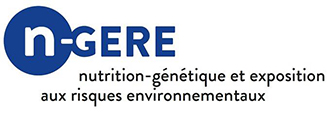Menkes disease is a rare genetic disorder that causes fatal copper deficiency in children (death before the age of three). Unfortunately, there is currently no drug treatment available on the market. Two laboratories of the UL (NGERE and CITHEFOR) have been developing for 4 years a synthetic transporter able to carry copper to the brain. The synthesized nanotransporter is stable, biocompatible, non-toxic and efficient. An accelerated regulatory procedure is currently under discussion with the European Medicines Agency and the consortium hopes to have a marketing authorization application for 2023.
LABORATORIES INVOLVED
At the initiative of Professor Feillet (UMR 1256 NGERE
INSERM directed by Pr JL Guéant), Children’s Medicine Department of the
Nancy-Brabois CHRU and coordinator of the Nancy Reference Center for Inherited
Metabolic Diseases, Professors F. Feillet, A. Boudier and I. Clarot (director
and deputy director of EA 3452 CITHEFOR) are developing a new drug for the
treatment of an orphan disease, Menkès disease.
The collaboration between Pr Feillet and the CTRS laboratory
was made possible thanks to the action of the Fondation Maladies Rares, more
precisely it is thanks to their free support system, called “Club
POC” that Pr Feillet was able to be linked with the CTRS laboratory, at
the request of the SATT SAYENS.
mENKES DISEASES
Menkès disease is a rare pathology of genetic origin which
occurs in one birth out of 300,000, i.e. two or three births each year in
France. Menkès disease induces a copper deficiency. Copper is a key trace
element for the survival of patients. This orphan disease is characterized by a
serious problem of functionality of a specific protein, ATPase 7A, which allows
the passage of copper through the intestine and the blood-brain barrier. As a
result, the copper brought by the diet or by the blood is unable to pass from
the intestine to the blood but also from the blood to the brain. This
deficiency leads to dramatic consequences for the patient, particularly in
terms of brain damage, lack of normal brain development and even death. There
is no effective treatment at present and the prognosis of this disease is
dramatic because the life span of the children concerned is less than 3 years.

aN INNOVATIVE DRUG
Nanoparticles pose many public health problems because their
extremely small size (0.2 – 100 nm) gives them the remarkable property of
passing through many biological barriers by persorption (passage through
physiological membranes without passing through physiological transporters),
particularly the blood-brain barrier. This mechanism, which can be very
problematic in terms of toxicity, can become a therapeutic avenue if the
administered dose is controlled. This concept is the basis for the invention of
a new synthetic copper transporter developed and proposed for the treatment of
Menkes’ disease. The first results obtained in vitro and in vivo demonstrate
that the nanotransporter is stable, biocompatible, non-toxic and above all
effective.
Towards regulatory AUTHORIZATION
This development project began at the end of 2018 with the
help and technical and financial support (maturation) of the SATT SAYENS
Technology Transfer Acceleration Company. A first French patent on the
synthesis of the synthetic transporter was filed in 2021, its European
extension is currently in progress. The CTRS laboratory is a partner for the
industrial pharmaceutical development of this new drug. The preliminary results
of the efficacy of this copper transporter on a mouse model of Menkes’ disease
being extremely promising, the various partners of the University of Lorraine
will apply for orphan drug status before the European Medicines Agency (EMA) in
the fall of 2022. With all the indicators in the green and an accelerated
regulatory procedure, the consortium expects to apply for marketing
authorization in 2023.




